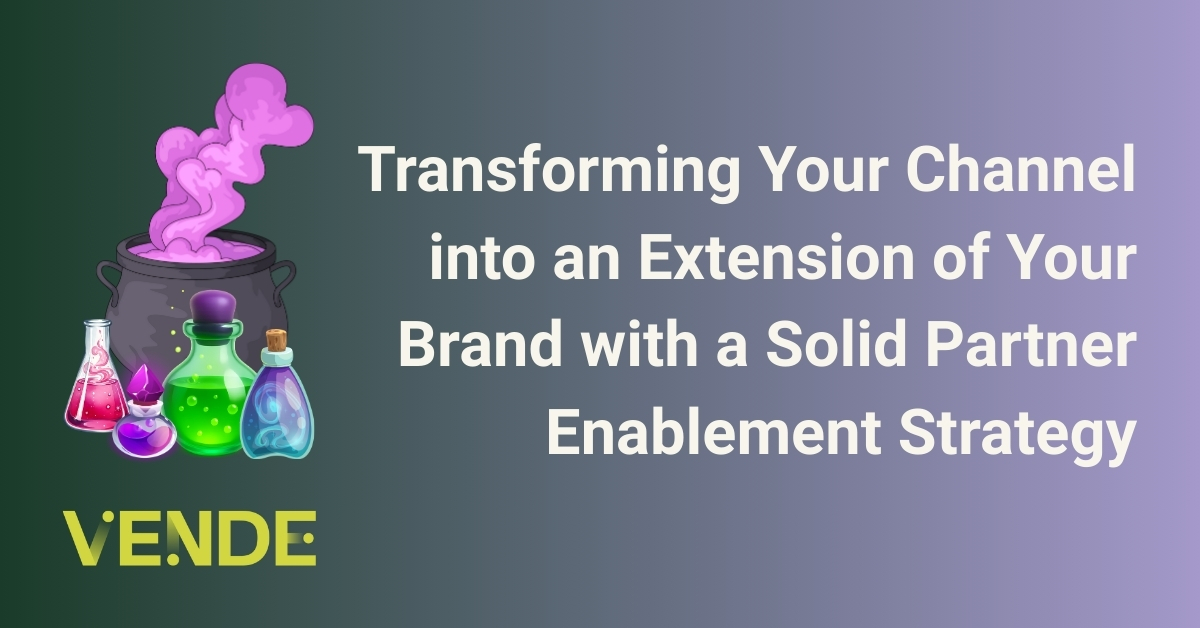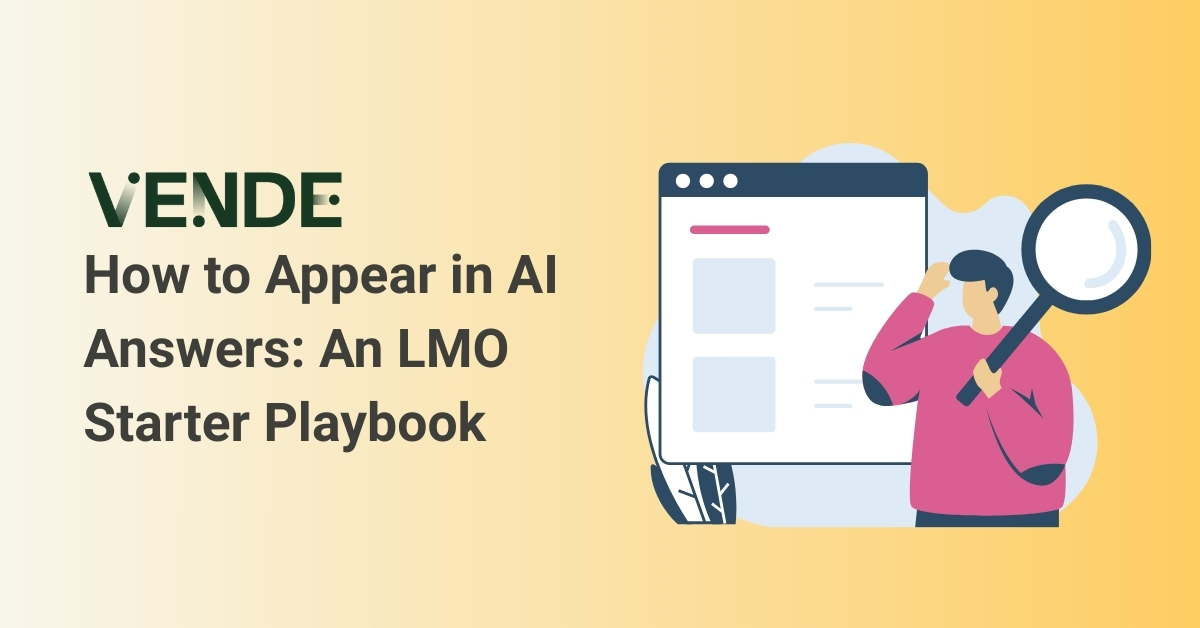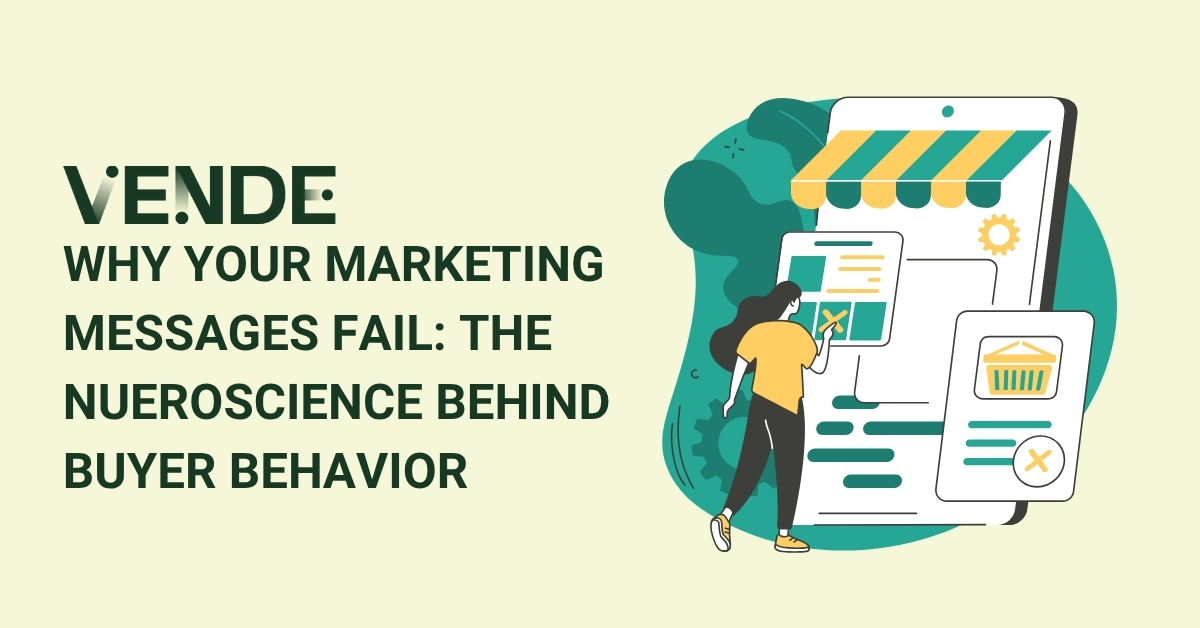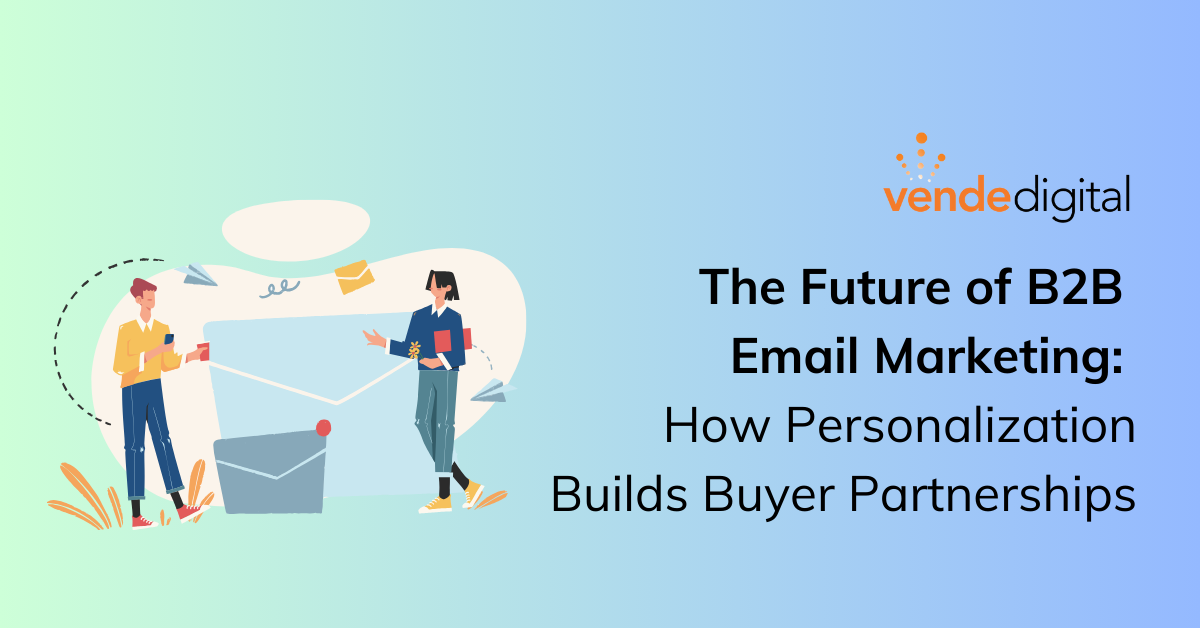
The Future of B2B Email Marketing: How Personalization Builds Buyer Partnerships
Email marketing is far from dead—in fact, it’s one of the most intimate ways to connect with your audience. Yet, the way B2B marketers use email must evolve. Buyers expect hyper-personalized experiences that help them solve problems, not another “pitch slap” clogging their inbox. To stay relevant, B2B marketers need to embrace personalization not as a buzzword but as the foundation for building meaningful partnerships with buyers.
Despite the rumors, email remains one of the most effective channels for B2B marketers, when used properly. Today’s buyers want experiences that feel personal and speak directly to their needs and challenges. Personalization isn’t just a tactic anymore. It’s key to build meaningful, long-term relationships. In this post, we’ll dive into how personalization is shaping the future of B2B email marketing, sharing trends and practical strategies to create buyer-focused campaigns that drive real results.
Why Personalization Matters in B2B Marketing
Buyers Expect More
Imagine receiving an email promoting a product that solves a pain point you’ve been struggling with for months. That email not only grabs your attention but positions the sender as a trusted advisor. This is the power of personalization—and it's what buyers now demand.
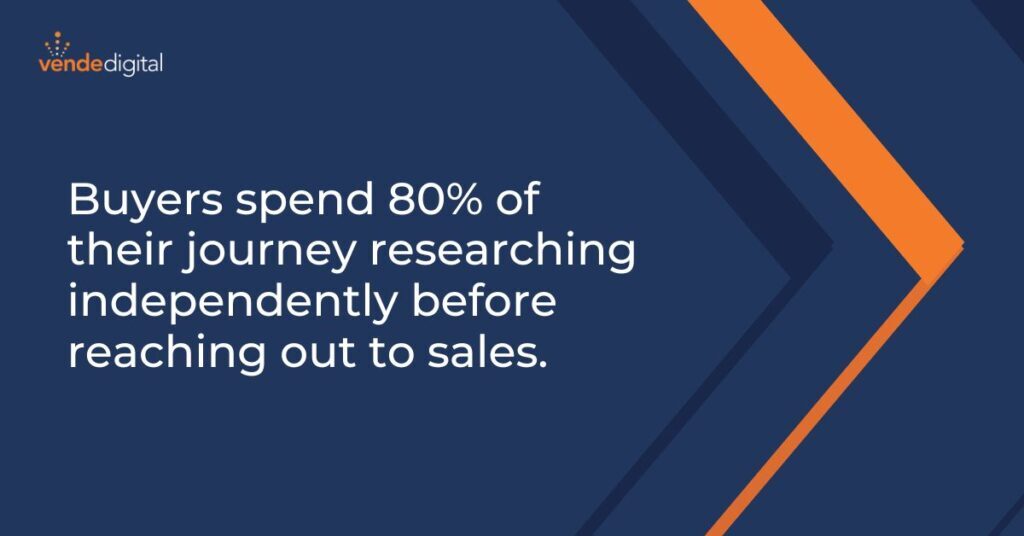
B2B email marketing has traditionally relied on “spray and pray” tactics—sending generic emails to massive lists and hoping for results. But today’s buyers are overwhelmed, with the average professional receiving more than 100 emails daily. Only messages that truly resonate will earn a click.
As we discussed in our recent Demand Gen Jam Session, buyers now spend 80% of their journey researching independently and consuming content before ever reaching out to sales. This means traditional pitch-heavy email campaigns aren't just ineffective—they risk alienating potential customers.
The Rise of Partnership-Focused Email Marketing
To win in this new landscape, marketers must shift from “selling” to “partnering.” As recent Demand Gen Jam Session guest and email expert Sheri Otto shared, successful email marketing requires aligning with the buyer's goals, challenges and needs. This isn’t about abandoning conversion-focused emails; it’s about approaching them from a value-first perspective. By tailoring content to the buyer’s needs, you move from pitching a product to solving a problem, fostering partnership over promotion.
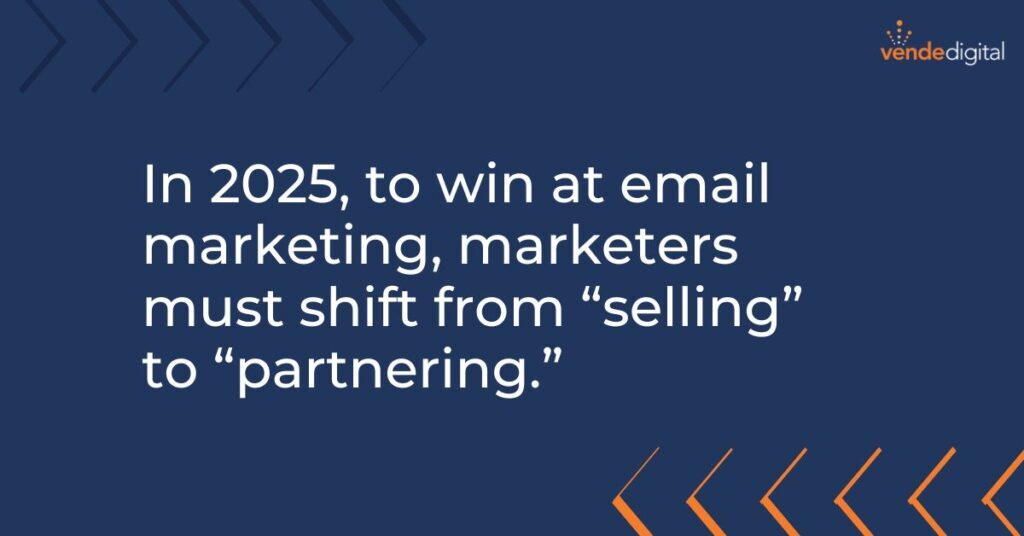
Key Trends Shaping the Future of B2B Email Marketing
1. Dynamic Content
Dynamic content automatically adjusts to buyer behavior, profile and stage in the customer lifecycle, enabling marketers to craft emails tailored to a recipient’s specific needs. For instance, a lead who downloaded a white paper on AI could receive a case study showcasing your AI solutions
Buyers today demand relevance—generic emails that ignore their pain points no longer cut it. Dynamic content hubs solve this by acting as repositories of personalized content, adapting seamlessly to individual personas, industries and buyer stages. This precision fosters stronger connections and drives higher engagement in a competitive marketplace.
2. AI-Driven Personalization at Scale
AI is revolutionizing email marketing by enabling hyper-personalization at scale. Tools like ChatGPT can help marketers create tailored content quickly, from personalized subject lines to in-depth resources. However, it’s critical to balance automation with human oversight. A thoughtful prompt can ensure AI-generated content aligns with your brand voice and provides genuine value. As your team becomes more skilled at prompting and your language model better aligns with your brand voice and tone, they can increasingly rely on AI generation.
Pro Tip: Start with a 50/50 balance of AI and human effort. As your team becomes proficient, shift to a 70/30 or even 90/10 ratio to save time without sacrificing quality. This gradual adjustment allows your team to build confidence in AI tools while maintaining control over critical tasks.
3. Automation that Feels Human
The key to effective automation is creating workflows that feel personalized and human. For example:
- Behavioral Triggers: Send a tailored follow-up email when a lead visits high-value pages like pricing or case studies.
- Lifecycle Nurturing: Develop email tracks for learners, prospects and buyers at different stages of their journey.
Automation isn’t about replacing human interaction; it’s about enabling it at scale.
Advanced email campaigns now leverage triggers like website visits, content downloads or webinar registrations. These triggers initiate tailored emails sent at the right time, increasing engagement and conversions.
Crafting Emails That Build Buyer Partnerships
Key Principles of Partnership-Driven Emails
Buyers don’t want to feel like a target—they want to feel understood and valued. Partnership-driven emails are a powerful way to build trust and connection with your audience. These emails achieve this by:
- Addressing the buyer’s specific challenges and goals, showing that you’ve taken the time to understand their needs and pain points.
- Offering actionable insights or tailored solutions that align with where they're in their journey, helping them see how you can support their success.
- Avoiding the trap of overly promotional language by focusing instead on delivering value and positioning yourself as a helpful partner rather than just another salesperson.
When crafted carefully, these emails foster genuine relationships and create a foundation for long-term collaboration.
Pro-Tip: Give buyers the power to decide their next move with the "Three Ways We Can Help" call-to-action. Offer clear options, like downloadable resources or event registrations, to guide them seamlessly toward their goals.
Humanizing Email Communication
Emails should feel personal and come across as though they’re written by a trusted advisor, not just a faceless brand. Building this connection can improve engagement and trust with your audience. Here are a few tips to craft effective emails:
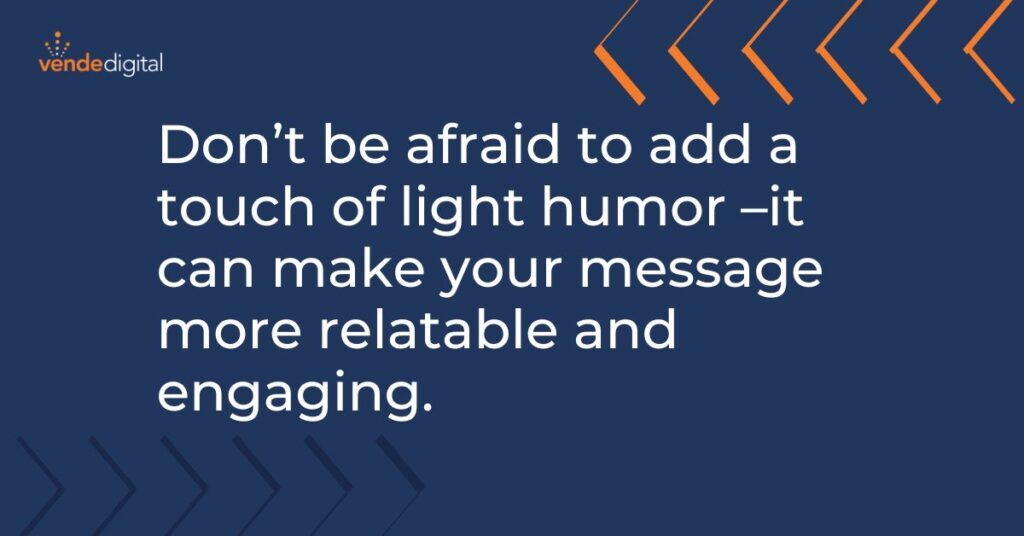
- Use curiosity-driven subject lines to immediately capture attention. For example, ask an intriguing question or hint at a surprising benefit waiting inside the email. This entices recipients to open your message.
- Adopt a conversational tone to make your emails feel approachable and human. Don’t be afraid to add a touch of light humor where appropriate—it can make your message more relatable and engaging.
- Reference recent actions or behaviors, such as downloaded resources, completed sign-ups or attended webinars. This adds a personalized touch, showing that you’re paying attention to their interests and needs.
By following these tips, your emails can feel more personal and impactful, creating stronger connections with your readers.
Building a Future-Ready Email Marketing Strategy
A strong email marketing strategy is essential for staying competitive in today’s fast-paced digital landscape. By focusing on understanding your audience, leveraging the right tools, and tracking meaningful metrics, you can create campaigns that truly resonate with your buyers and drive results.
How do you build a future-ready email marketing strategy?
1. Understand Your Audience:
Start by gathering insights about your customers through segmentation and behavior data. Use this information to create detailed buyer personas, identifying their unique pain points and preferences. This step sets the foundation for crafting personalized and impactful email campaigns.
2. Leverage Technology:
Invest in advanced marketing tools like HubSpot, Mailchimp, or Marketo to streamline your workflows. These platforms allow you to automate repetitive tasks, design dynamic content hubs, and personalize messaging at scale. By using the right technology, you can save time and ensure your emails always stay relevant to your audience.
3. Align Content with Goals:
Develop email tracks that directly address specific challenges buyers face at different stages of their journey. For example, use educational emails at the awareness stage, solution-oriented messaging in the consideration stage, and more direct CTAs for decision-making. Aligning content with your goals ensures your emails drive tangible results while providing value to recipients.
What metrics matter when reporting on email marketing success?
To understand your strategy’s success, consistently track and analyze key metrics:
- Engagement Rates: Monitor open rates, click-through rates, and replies to measure how well your emails capture attention and drive interaction. A high engagement rate is often a sign your content is resonating with your audience.
- Conversion Metrics: Dive deeper into how your emails contribute to the sales funnel. Track conversions from leads to MQLs, opportunities, and ultimately closed deals. This helps you understand the revenue impact of your email campaigns.
- Buyer Feedback: Pay attention to responses that indicate positive reception, such as replies to humanized messaging. Gathering qualitative feedback from buyers can reveal opportunities for further improvement and personalization.
By following these steps and focusing on the right metrics, you’ll be well-equipped to build an email marketing strategy that not only meets today’s needs but is also poised for future growth.
The Buyer-First Future of B2B Email Marketing
Email marketing isn’t dying—it’s evolving. In today’s crowded digital landscape, buyers demand more than generic outreach; they want messages that feel relevant and personalized. To thrive in 2025 and beyond, B2B marketers must embrace personalization as a tool for building meaningful partnerships and trust with their audience.
By leveraging AI, automation and a buyer-first mindset, you can craft campaigns that resonate with your target audience, meet them where they're in their buying journey and deliver real value. This approach not only improves engagement rates but also strengthens long-term customer relationships and drives measurable results.
Ready to take the next step? Download our Diagnostic Checklist for B2B Email Marketing to uncover actionable strategies and expert tips to transform your campaigns into powerful tools for growth. Don’t settle for outdated tactics—start creating emails that truly connect today!
Key Takeaways for Building a Personalized Email Strategy that Partners with Your Audience
- Personalization is no longer a tactic—it’s key to building long-term relationships with B2B buyers.
- Partnership-focused email marketing shifts from selling to solving problems and fostering connections.
- Dynamic content, AI-driven personalization and automation that feels human are top trends shaping the future of B2B email marketing.
- When crafting emails, focus on understanding your audience, leveraging technology, aligning content with goals and tracking engagement, conversion and buyer feedback metrics.
- Adopting a buyer-first mindset ensures your campaigns resonate with your target audience's needs and preferences.
- Meeting prospects at their specific stage in the buying journey improves engagement and conversion rates.
- Use the Diagnostic Checklist for B2B Email Marketing as a resource to refine your strategy.

